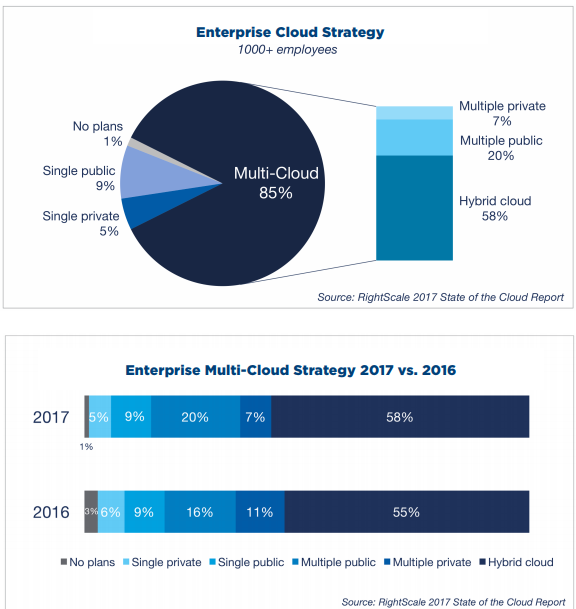Microsoft announced last week that it has agreed to buy Cloudyn, an Israel-based company that provides automated cloud monitoring, analytics and optimization for customers.
It is an extremely interesting acquisition for Microsoft because Cloudyn can work across different cloud platforms, not just Microsoft Azure. According to Cloudyn, the company provides:
“Highly granular, real-time visibility into consumption, cost and performance of your multi-platform, hybrid cloud based on financial and operational metrics accessed via a single pane”
Cloudyn’s biggest strength is not just allowing customers to manage their cloud billing, but making management easier for customers who are operating across multiple platforms. Most companies, especially the large ones, have now started to use multiple cloud service providers to address their cloud requirements.
Snap Inc.’s recent IPO filing revealed that the company has spread its risk by going multi-cloud, using the services of both Google Cloud Platform as well as Amazon. HTC uses Google Cloud, Amazon and Microsoft, while streaming giant Netflix has been using a multi-cloud strategy for a very long time; and the list will keep growing.
Enterprises around the world don’t really want to get tied down to a single cloud provider. They always want to have the choice, and rightly so. It reduces risk, spreads data and application across multiple platforms and, if used properly, can achieve near-zero downtime, even if one of their cloud providers’ data centers vanishes into thin air.
Though multi-cloud is the preferred and the best option to take for technology departments around the world, its easier said that done. The recent Amazon Web Services crash that took the internet down for many hours showed clearly that even top companies with more than enough money on hand weren’t really serious about multi-cloud. A proper multi-cloud deployment would have stopped their applications from going down.
But things have been changing, albeit slowly. Big crashes such as Amazon’s have increased awareness, and enterprises are slowly moving towards multi-cloud deployments.
According to a recent survey by Rightscale, 85% of enterprises were working on a multi-cloud strategy. Though a majority of them were moving towards a hybrid model, 20% of the enterprises were planning for multiple public clouds, an increase of 4% compared to last year. This number can only increase from here as more and more companies get accustomed to using multi-cloud.
This is where Microsoft’s decision to buy Cloudyn makes a lot of sense. Azure customers – at least a decent portion of them – may already be using multiple cloud platforms, and there is a very good reason for that number to keep going up. Instead of behaving like the old Microsoft and make things difficult for its customers to use competitors’ products, the new Microsoft is trying to make a multi-cloud deployments easier to monitor, manage and optimize across different platforms.
Thanks for visiting! Would you do us a favor? If you think it’s worth a few seconds, please like our Facebook page and follow us on Twitter. It would mean a lot to us. Thank you.




